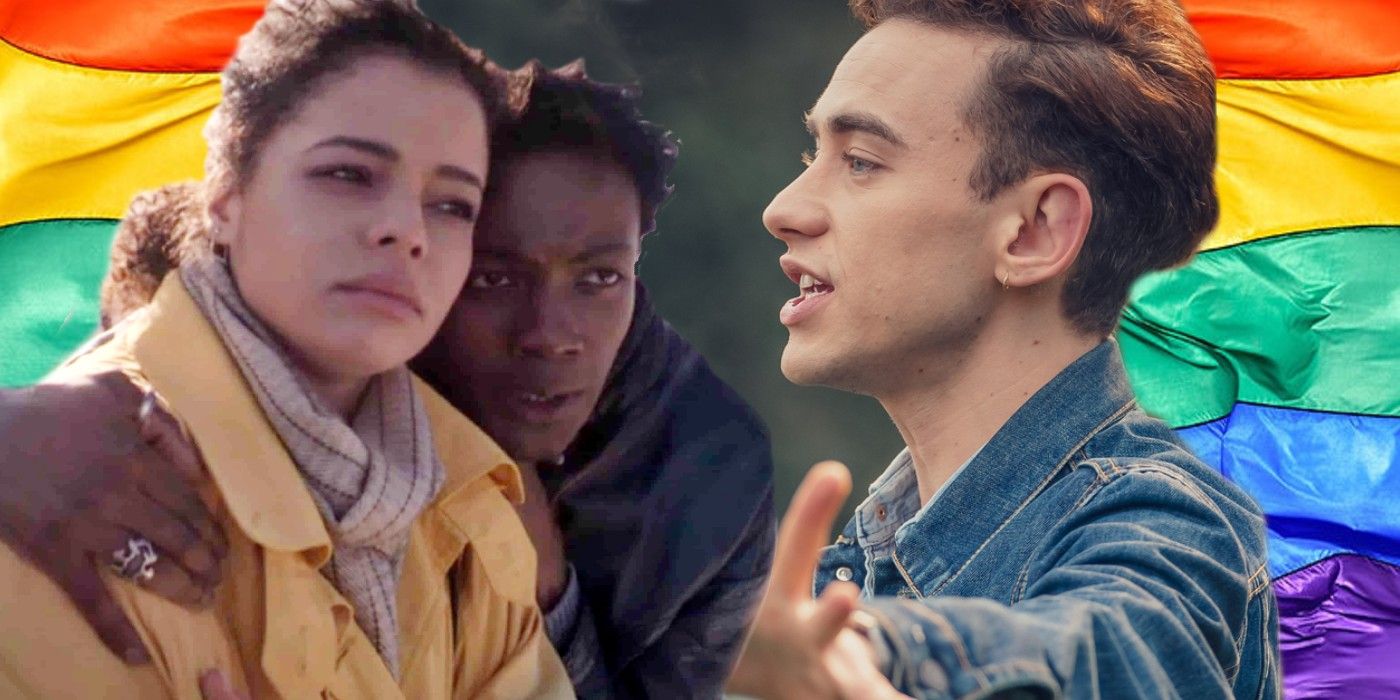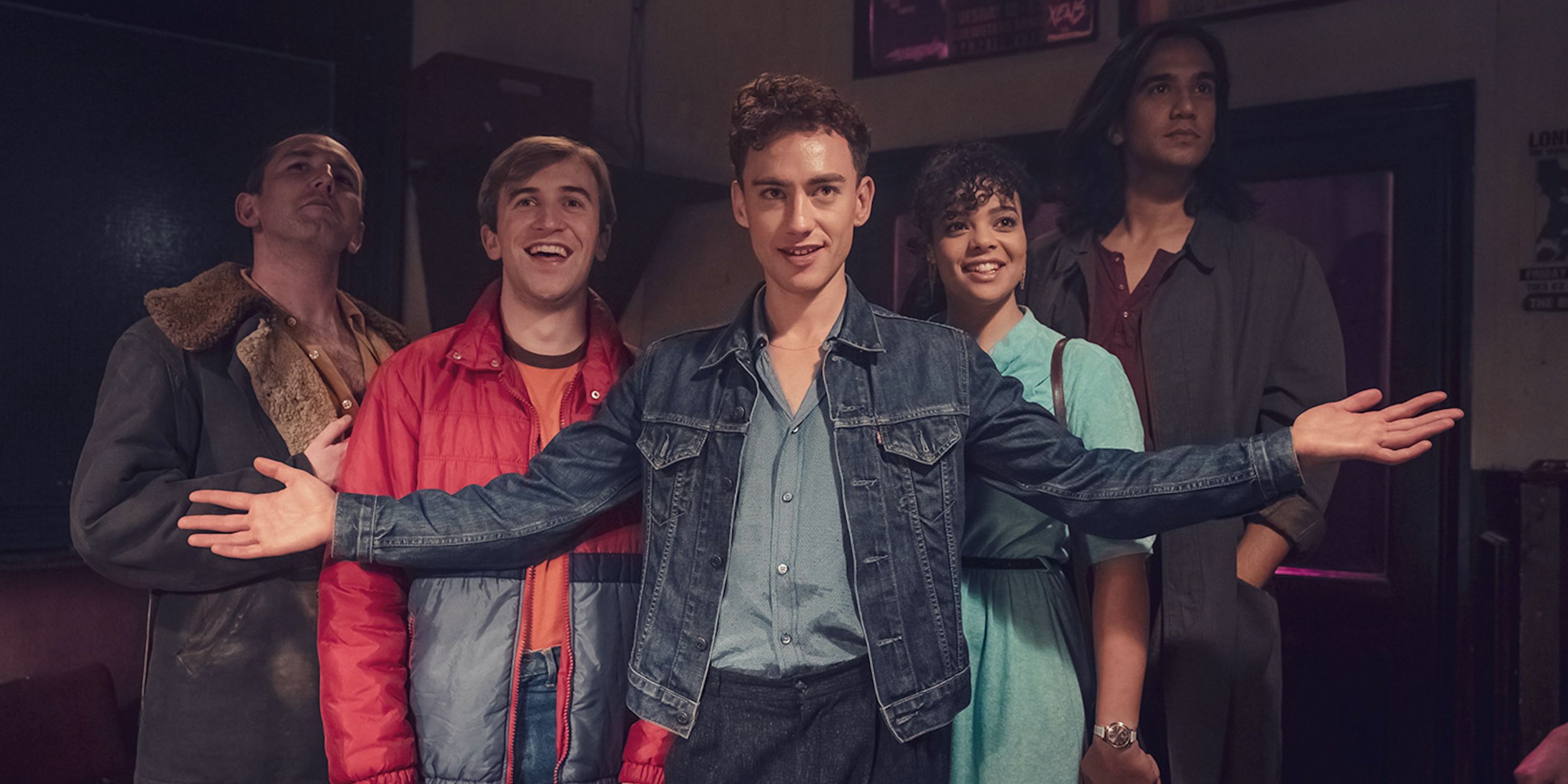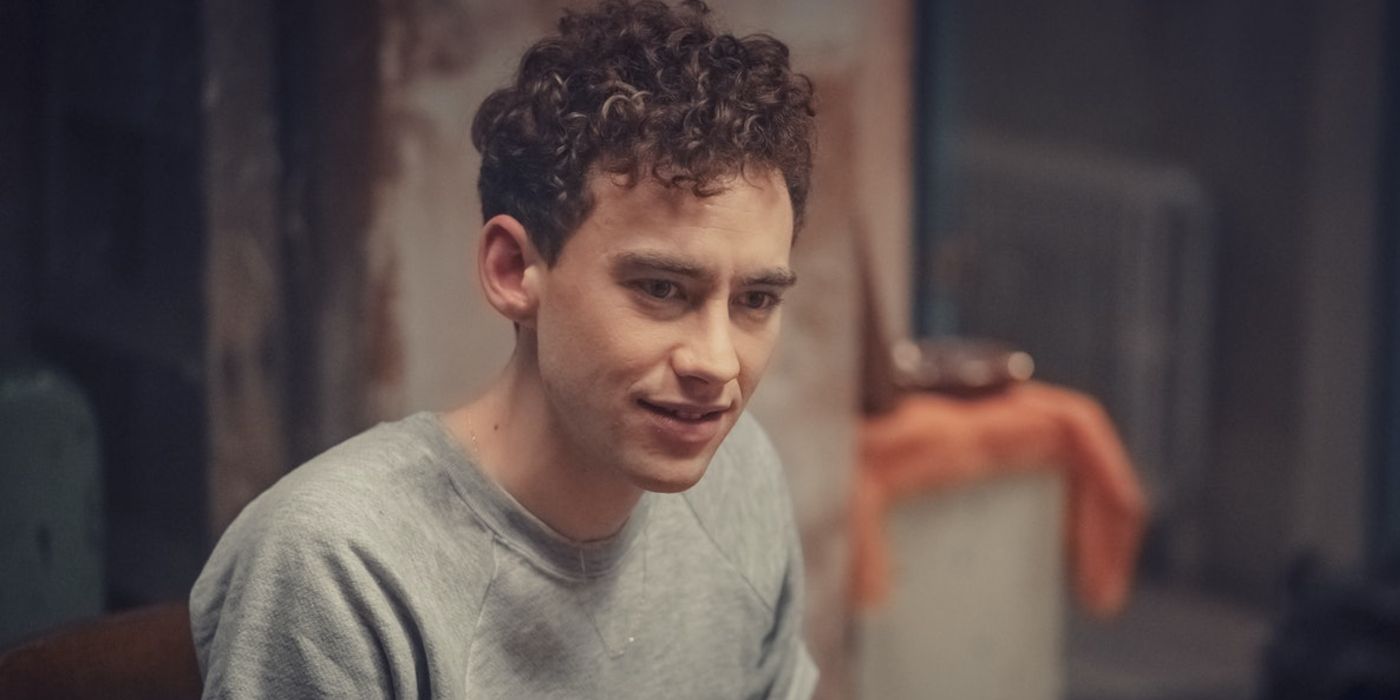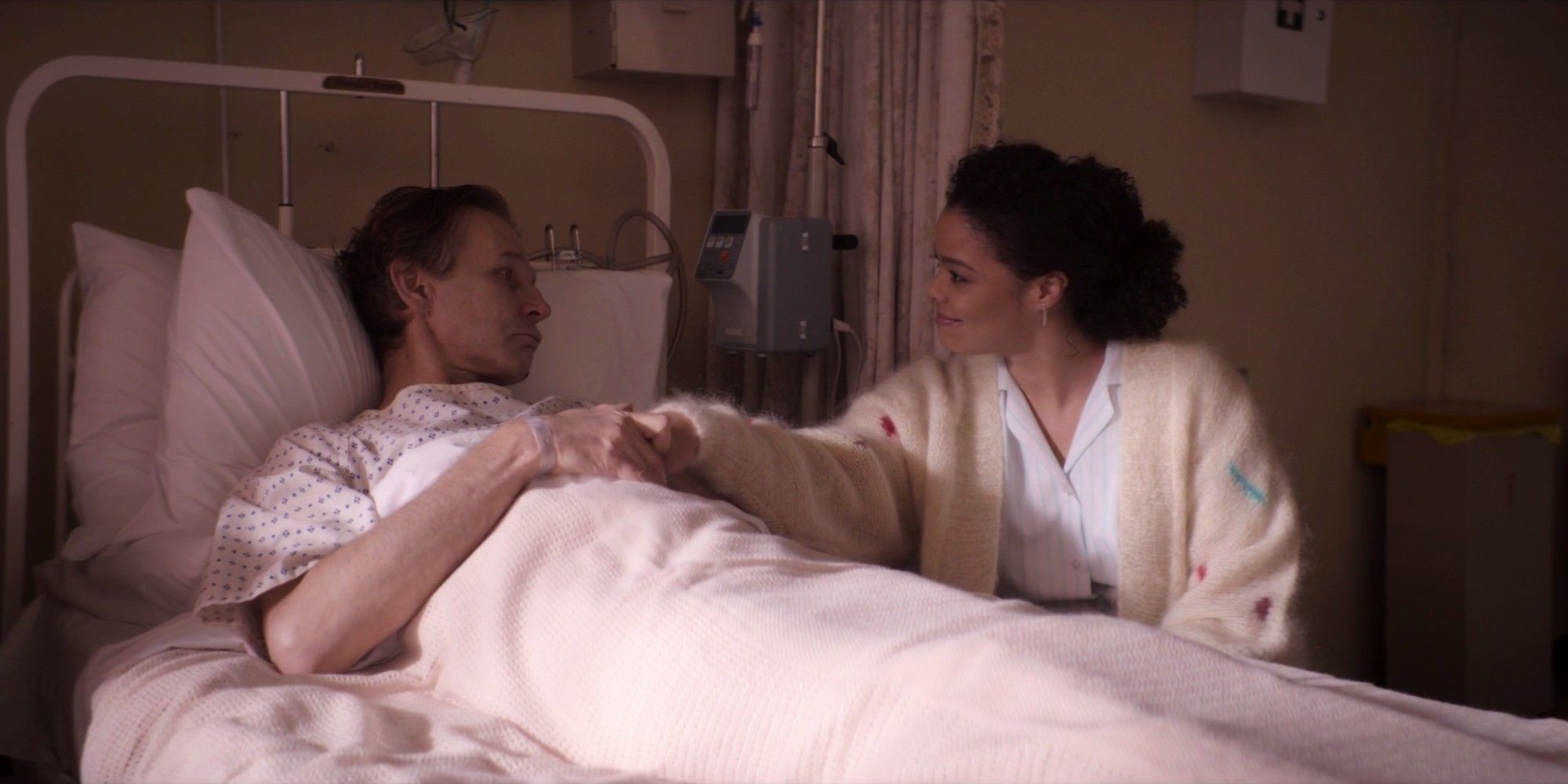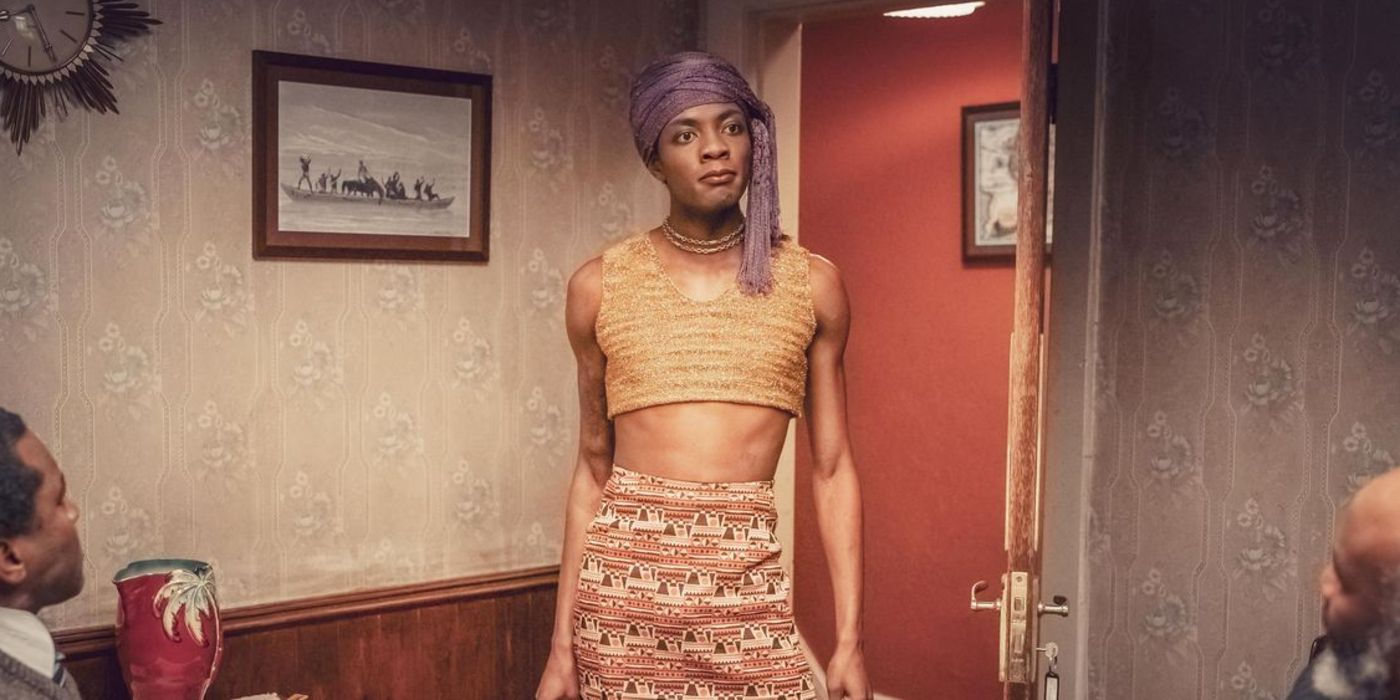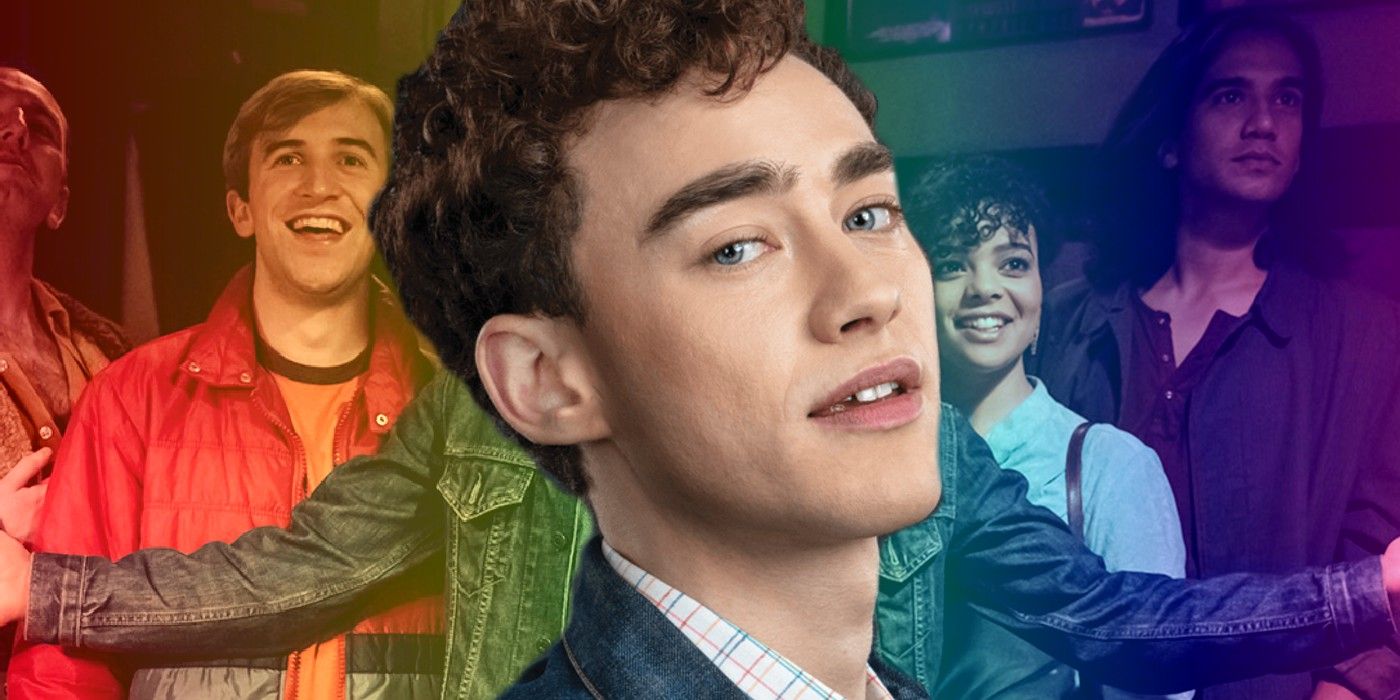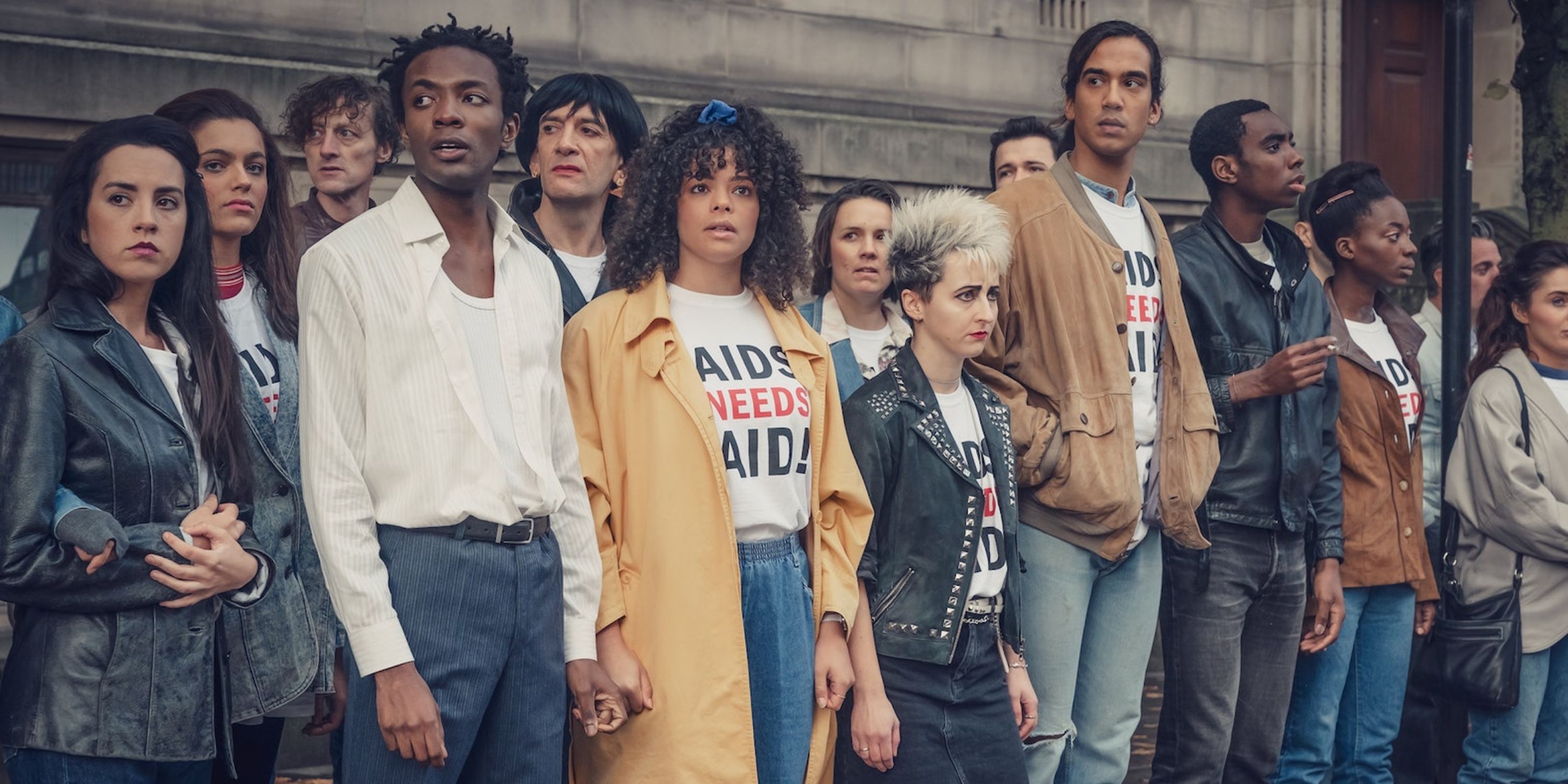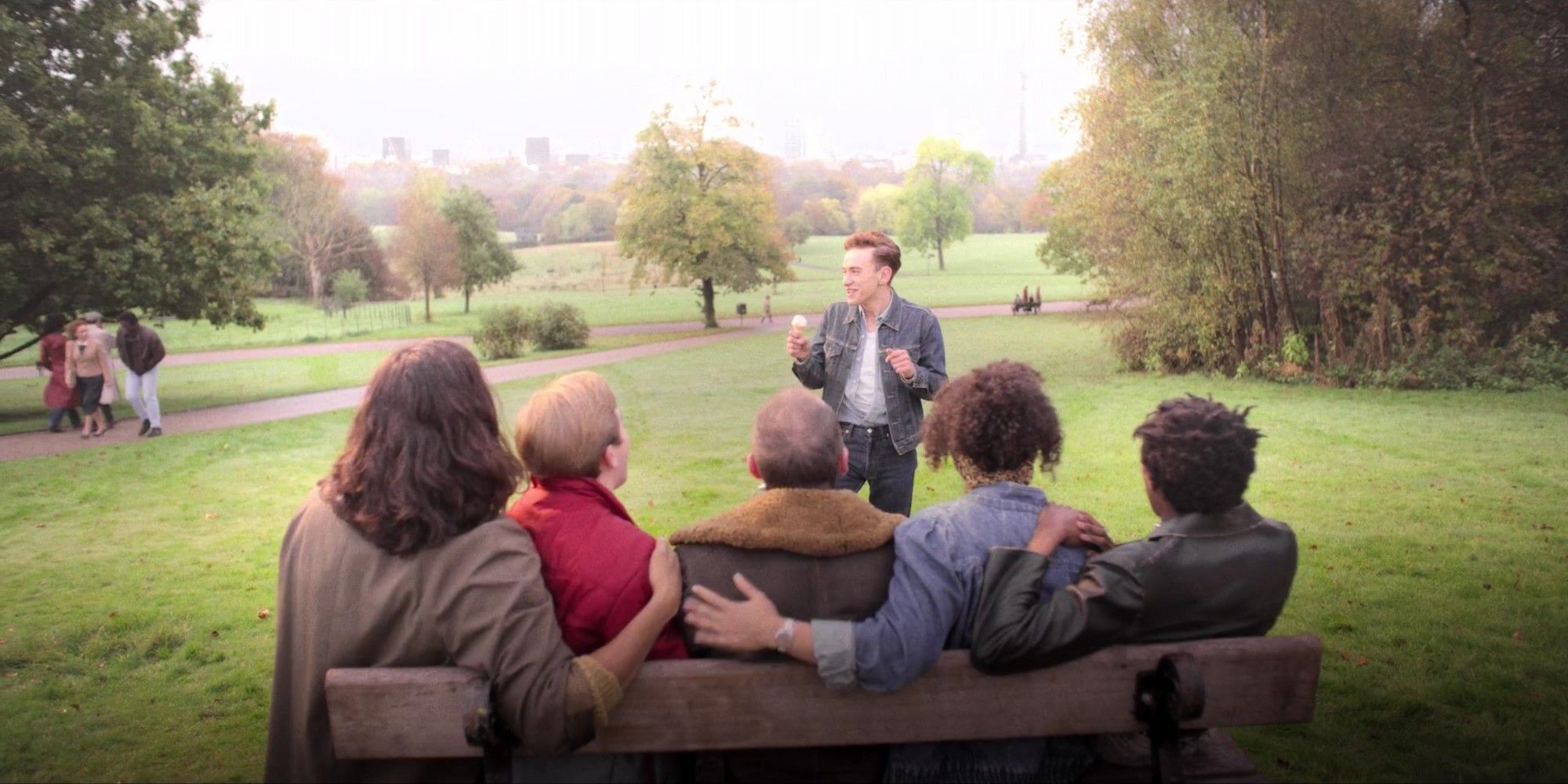Early on in the hit series It's A Sin, there's a glimpse into the hopeful futures of the heroes of the show that hints and what the show is all about. Ritchie wants his "name in lights". Colin will "still be happy working here", at the tailor where he's apprenticing. Roscoe predicts, "I'll be stinking rich". It's a perfect moment that encapsulates so much about three central characters who will be swept up in the AIDS epidemic that devastates the queer population in London. We see the aspirations of these vibrant, hopeful, spirited young men. But knowing even a little the history the show is depicting casts a shadow over the declarations: Who among these men will be lost to AIDS?
Swerving from uplifting to devastating from scene to scene, It's A Sin is a brilliant (if not easy) watch. Created by Russel T. Davies of Queer As Folk and Years & Years, it covers 10 years of the AIDS epidemic over the course of five episodes, in turns mourning and celebrating the young men who were most commonly affected by it. We start with Ritchie (Olly Alexander) who moves away from his strict, conservative family on the Isle of Wight to London for university, where he meets a new crew of friends who celebrate his – and their own – queerness, including Jill (Lydia West), Ash (Nathaniel Curtis) and Roscoe (Omari Douglas). Separately we meet the quiet and gentle Colin (Callum Scott Howells) who has moved to London for an apprenticeship at a tailor.
Over the following episodes, we see the group react to AIDS at first with disbelief, until they witness gay men falling victim to the virus, including their friend Gregory (David Carlyle) and Colin's mentor Henry (How I Met Your Mother star Neil Patrick Harris). Soon these young gay men are affected themselves: Colin falls ill after contracting AIDS from a former roommate and suffers a terrible decline. His death prompts his friends to get tested: Roscoe and Ash discover they are not infected, but Ritchie avoids receiving his results. He soon suffers from the disease himself – which is when his vengeful parents swoop back in from the Isle of Wight to discover they didn't know their son quite as well as they'd thought.
How Much Of It's A Sin Really Happened?
Showrunner Russel T. Davies has said that much of It's A Sin is loosely based on events from his own life, living as a gay man in the 1980s. This is fictional television drawing on historical facts. Most characters in the show are not based on real people, instead being composite characters drawing from a range of events, but Jill Baxter is based on a real woman: Jill Nalder, a friend of Davies' from the era (who actually plays Jill's mother in the show). While the character of Colin is a fictional creation, his plight through the contraction of HIV and AIDS, his detainment, and eventual death are all based on a real case from the time.
The depiction of the era covered in the show, from 1981 to 1991, is also based in fact. Davies himself has reflected on how people were at first deniers of the AIDS crisis, and how the decade that started with an exploration of the freedom offered gay people in cities like London, turned to one of fear and trauma, similar to what is depicted in the show. The era was marked by protest and dissatisfaction with how the government and health authorities treated gay people and the AIDS crisis as a whole. Friends would disappear "back home" and never be seen again, just like what happened to Ritchie, and the UK government handling of the crisis has long been criticized.
Why Ritchie's Death Isn't Shown In It's A Sin's Ending
It's A Sin wasn't made to give closure. It's not an easy watch, but it tries to faithfully depict how gay men, their friends and families were feeling as the AIDS epidemic ripped through the population of gay men, who were unequally affected. It also explores how the people around those who contracted HIV and AIDS acted. Ritchie never told his family even that he was gay until they turn up in London to surprise him and discover him in his hospital bed, suffering from lymphoma caused by complications with AIDS. His mother (Keeley Hawes) and father (Shaun Dooley) are incensed, and blame everyone from Ritchie, to the nurse working on the AIDS ward, to Jill and Ash. They're deflecting their feelings of inadequacy, shame and blame. In order to attempt to make up for their failings, they take Ritchie back to the Isle of Wight and prevent his friends from seeing him until it's too late. Ritchie's offscreen death might preserve for Jill, Roscoe and the viewer his earlier depiction as rambunctious and colorful, but it takes away from their closure. They couldn't be with their friend when he needed them most. Depicting Ritchie's death in this way - somewhat in contrast to Colin's earlier death - emulates the feeling of loss felt by survivors of the AIDS crisis after their friends disappeared.
Why Jill Visits The Man Dying Of AIDS
Despite depicting the horrors suffered by those affected by HIV and AIDS, It's A Sin strikes a hopeful tone of preserving memory and helping people through the darkest times of their lives. By the end of the series, Jill has known about, helped people through, and educated people about AIDS as an activist for nearly a decade. She knows that, despite how she feels about losing her best friend, the fight isn't over. The man who is dying of AIDS is revealed in an earlier scene to have no visitors, and no requests to contact anyone. He's alone, like so many men were during the crisis. Jill goes to the man to comfort him because he has no one else. Her actions prove that the fight isn't over, that more activism is needed, and that people like Jill will continue to fight for those who can't.
Why Roscoe Goes Back To His Family
Roscoe has a chance encounter with his father in the AIDS ward. He's been called to support a man on the ward. It jolts Roscoe to consider these people he thought he had left behind him. His father tells him that he had visited Nigeria, where the family had planned to send Roscoe early in the season. In Nigeria, his father saw people suffering of AIDS – not just gay men, but people women and children, too. He's had a real come-to-Jesus moment, realizing that the disease is not a punishment sent from God to affect only gay people, and he asks for Roscoe's forgiveness. Roscoe returning to his family is a sign of his working towards giving that forgiveness, and tentatively bringing his family back into his life.
It's A Sin Is About Weaponizing Identity
Throughout the period depicted in the show – and for a long time before, after and still – people who are different have been stigmatized and treated as outsiders, and unworthy of love or attention or support. This applies especially to minority groups such as people in the LGBTQIA+ community.
It's A Sin shows, at so many points, how an individual's identity can be weaponized against them. Colin is fired simply for owning newspapers and magazines which discuss AIDS, and is locked up and deemed, "a menace to society" because he contracts the virus. Ritchie feels shame and hides his true identity from his family because he fears they will react badly if he decides to come out, which is the same shame he feels upon contracting HIV and why he hides his positive status. Forming an unconventional found family at the Pink Palace – the apartment the main characters share – is a way to band together and protect against that stigmatization. The queer safe spaces we see depicted on the show, such as the gay clubs and the AIDS ward, are also a way these cultures protect themselves from discrimination and persecution.
It's A Sin Is A Coming-Of-Age Story For A Lost Generation
There were so many people lost to the AIDS epidemic, and It's A Sin attempts to tell the story of this generation growing up from carefree and idealistic, eventually becoming responsible and caring, bound closer together by their shared trauma. The moment at the beginning of It's A Sin where the main characters reflect on their goals for the future shows what Ritchie wants: to be a famous and celebrated actor creating good work, no matter the size of the role.
But It's A Sin isn't only focused on trauma and death, or on what went wrong. The show balances the joy in life these young people experience, and the joy and loving bonds that bind them in their shared found family. The show takes a lot of time to celebrate each of the victims' lives, whether that be Gregory's joy and vivacity, Ritchie's love of life and passion for acting, Colin's wide-eyed discovery of the world, or Henry's long-time love of his partner. The show celebrates this lost generation of gay men as much as it mourns them.
What It's A Sin's Ending & Final Shot Means
One of the last times we see Ritchie, he's talking with his mother in his childhood bedroom, trying to show her why – despite loving her and needing her – he's desperate to see his friends. He talks like he would with them, casually, lewdly, talking about his sexual experiences and all the beys he'd been with, and she recoils. But his point is that he lived the life he wanted to live and that he "had so much fun". The scene gives us Ritchie in a nutshell, but this final scene with him and all his friends takes it a step further, celebrating the way these people have come together and found joy in who they really are.
This celebration of these young men is crystallized in the final scene of the show, which depicts the main characters in a leafy park on a bright day. Ritchie stands before Roscoe, Jill, Gregory, Colin, and Ash, practicing a monologue from William Shakespeare's play Twelfth Night melting ice-cream in hand. The joy these people feel for and in each other is so clear, they're laughing and hugging and touching, just being together. They've found the people who can help them through the worst times. Despite It's A Sin being a brutal watch, there are equal measures of beauty in each episode.

